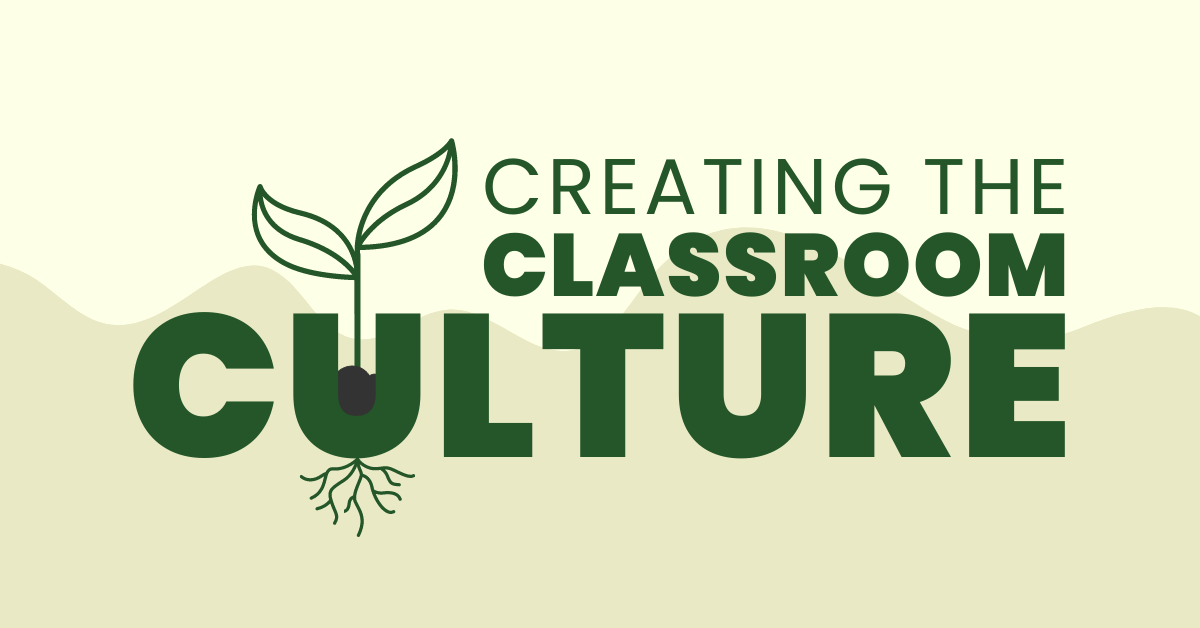|
Three ways to create a supportive environment that nurtures students' academic, social, and emotional growth.
The beginning of the school year presents a valuable opportunity to establish a positive classroom culture and forge meaningful relationships with our students, creating an environment that nurtures learning, collaboration, and student growth.
Let’s start the year headed in the right direction!
Creating your classroom
The design of your classroom space plays a pivotal role in setting the tone for the entire year. One key aspect to consider is your classroom library. In my own classroom, I loved creating a library, as I believe a thoughtfully curated collection of books has the power to ignite a love for reading and literacy. I aimed to select diverse and engaging books that reflected the interests and experiences of my students, and I worked to make the library easily accessible by using colorful baskets or organizers to store the books. By making the library the centerpiece of my room, I encouraged students to explore and immerse themselves in the vast world of literature. To foster a sense of ownership, I also involved them in identifying trends and connections between texts and let them create themed baskets with corresponding titles. Another important aspect to focus on is the arrangement of desks or tables in your room, aiming for a collaborative, warm, and inviting setup that eliminates students feeling isolated or overlooked. Experiment with different configurations in your room, and assess how they feel from a student's perspective — walk around the room, sit in the chairs, and consider the visibility and opportunities for interaction each arrangement offers. Creating an inclusive and effective physical environment contributes to a positive classroom culture where students feel valued and supported.
Understanding your students
Every student brings their unique experiences, interests, and identities to the classroom. Taking the time to get to know them as individuals helps build meaningful connections and can help us tailor instruction to meet their needs. One approach that I love to use is intentionally selecting mentor texts to inspire student storytelling. For instance, I found Sandra Cisneros' "My Name" from her book The House on Mango Street to be a powerful text that encouraged students to reflect on and share stories about their own names. By analyzing the author's writing style and reflecting on their own experiences, students gained a sense of empowerment and ownership over their personal narratives. Engaging students in activities that explore their surroundings can also provide valuable insights into their lives beyond the classroom. Consider asking students to create maps of their neighborhoods, homes, or any significant spaces in their world. This activity can not only foster a sense of belonging, but also encourages students to reflect on their personal histories and connections to their communities.
Getting to know your learners
Understanding our students' strengths, needs, and learning styles is essential for effective instruction. One way to do this is by gathering any available data from the previous year, including academic performance records and input from previous teachers. This kind of information can help you identify areas where students may require additional support or enrichment. However, we know that data alone cannot provide a comprehensive understanding of your students' learning profiles. Prioritize one-on-one conversations with each student within the first few months of the school year. During this time together, ask about their interests, learning preferences, and goals for the year. By building personal connections and listening to their perspectives, you can better connect to their individual needs and aspirations. This knowledge will enable you to tailor your instruction and provide the necessary support to help each student thrive. Additionally, consider using low-stakes diagnostic assessments to gain insights into your students' abilities. Find opportunities to engage students in games and competitions that allow you to understand their skills in reading, writing, and mathematics. When possible, utilize technology to record and/or analyze their responses. These types of activities can help you avoid overwhelming students with tests while still receiving information that can help you grasp their foundational knowledge and strengths.
Creating a positive classroom culture, establishing personal connections, and understanding your students — both as individuals and as learners — all require intentional effort at the start of the school year. By incorporating these promising practices into your teaching approach, you can help to create an inclusive and supportive environment where all students can thrive academically, socially, and emotionally. Here’s to a new school year. I hope it’s one of growth and success!
|
|
The Center for Professional Education of Teachers (CPET) at Teachers College, Columbia University is committed to making excellent and equitable education accessible worldwide. CPET unites theory and practice to promote transformational change. We design innovative projects, cultivate sustainable partnerships, and conduct research through direct and online services to youth and educators. Grounded in adult learning theories, our six core principles structure our customized approach and expand the capacities of educators around the world.
|
ABOUT US
525 West 120th Street, Box 182 New York, NY 10027 416 Zankel Ph: (212) 678-3161 [email protected] Our Team Career Opportunities |
RESOURCES
Professional Articles Ready-to-Use Resources Teaching Today Podcast Upcoming PD Opportunities |
COACHING SERVICES
Custom Coaching Global Learning Alliance Literacy Unbound New Teacher Network Student Press Initiative |


























